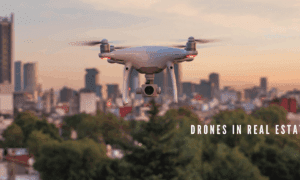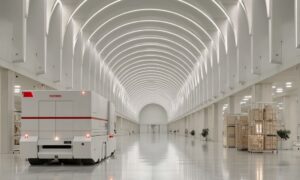In the fast-evolving landscape of technology, Augmented Reality (AR) has emerged as a revolutionary force, transforming the way we perceive and interact with the world around us. This blog post aims to delve into the science behind Augmented Reality, unraveling the intricacies that make AR a cutting-edge technology with immense potential.
Understanding Augmented Reality
At its core, Augmented Reality refers to the integration of digital information with the user’s environment in real-time. Unlike Virtual Reality (VR), which immerses users in a completely simulated environment, AR enhances the real world by overlaying digital elements onto it. This is achieved through a combination of hardware, software, and advanced sensory technologies.
Key Components
- Hardware
AR devices come in various forms, ranging from smartphones and tablets to specialized AR glasses and headsets. These devices are equipped with cameras, sensors, and displays, enabling them to capture the real world and seamlessly integrate digital content.
- Sensors
The success of AR heavily relies on sensors that gather data about the user’s environment. These include cameras for visual input, GPS for location tracking, accelerometers for motion detection, and gyroscopes for orientation sensing. These sensors work in harmony to provide a comprehensive understanding of the user’s surroundings.
- Software
AR software is responsible for processing data from sensors and rendering digital content in real-time. Advanced algorithms are employed to align virtual objects with the physical environment, ensuring a cohesive and immersive experience for the user. Popular AR platforms include ARKit for iOS and ARCore for Android.
The Science Behind AR Technology
- Computer Vision
Central to AR is computer vision, a field of artificial intelligence that empowers devices to interpret and make decisions based on visual data. AR devices use computer vision algorithms to recognize objects, track movements, and understand the geometry of the user’s surroundings. This allows virtual elements to interact seamlessly with the real world.
- Simultaneous Localization and Mapping (SLAM)
SLAM is a key technology in AR that enables devices to map their environment in real-time while simultaneously tracking their own position within that space. By combining data from sensors, SLAM algorithms create a digital representation of the physical world, enabling accurate placement of virtual objects.
- Gesture Recognition
Another critical aspect of AR technology is gesture recognition. This allows users to interact with digital elements using gestures, such as hand movements or facial expressions. Advanced algorithms analyze input from sensors to understand and respond to user gestures, enhancing the overall user experience.
Applications of Augmented Reality
- Gaming
AR has redefined gaming, offering an immersive and interactive experience that extends beyond the confines of screens. Games like Pokémon GO pioneered the fusion of virtual and real-world elements, encouraging players to explore their surroundings to discover and capture virtual creatures. This gamification of the real world has garnered immense popularity, introducing a new dimension to traditional gaming.
- Education
Augmented Reality has immense potential to revolutionize education by providing dynamic and interactive learning experiences. AR applications can overlay educational content onto textbooks or physical objects, making abstract concepts tangible. Students can explore historical artifacts, dissect virtual organisms, or witness scientific phenomena up close, fostering a deeper understanding of the subject matter.
- Healthcare
The healthcare industry has embraced AR for a range of applications. Surgeons use AR during procedures for enhanced visualization, allowing them to see critical information such as patient data and 3D reconstructions of internal structures in real-time. Medical training simulations, rehabilitation exercises, and patient education are also benefiting from the immersive capabilities of AR.
- Retail
AR is reshaping the retail experience by bridging the gap between online and physical shopping. Virtual try-on applications enable customers to visualize how clothing or accessories will look on them before making a purchase. In-store AR displays and interactive catalogs provide additional product information, creating a more engaging and personalized shopping environment.
- Navigation
AR is transforming navigation by providing users with real-time contextual information about their surroundings. Navigation apps overlay directions, points of interest, and other relevant data onto the user’s field of view, whether they are walking, driving, or using public transportation. This not only enhances the navigation experience but also improves safety by keeping users informed without distracting them from their surroundings.
- Manufacturing and Maintenance
In industrial settings, AR is streamlining manufacturing processes and maintenance tasks. AR-equipped smart glasses or devices guide workers through complex assembly processes, reducing errors and improving efficiency. Maintenance technicians can use AR to access real-time information about machinery, making repairs more precise and reducing downtime.
Challenges and Future Trends
While AR has made remarkable strides, challenges such as hardware limitations, privacy concerns, and the need for improved user interfaces remain. However, ongoing research and development are addressing these issues, paving the way for the future of AR.
Looking ahead, the integration of 5G technology, advancements in wearables, and the continued evolution of computer vision are poised to take AR to new heights. The fusion of AR with artificial intelligence and the Internet of Things (IoT) holds the promise of creating truly smart and context-aware augmented environments.
Conclusion
Augmented Reality (AR) technology is a paradigm shift in how we interact with the world. By understanding the science behind AR, we gain insight into the complex interplay of hardware, software, and advanced algorithms that make this technology possible. As AR continues to mature, its impact on various industries and aspects of our daily lives is bound to deepen, ushering in a future where the boundaries between the physical and digital worlds blur into a seamless and enriched reality.



































